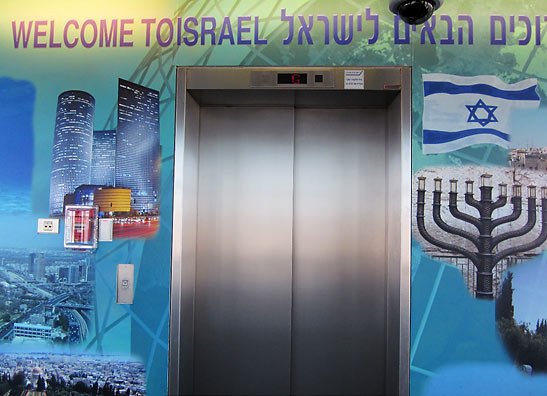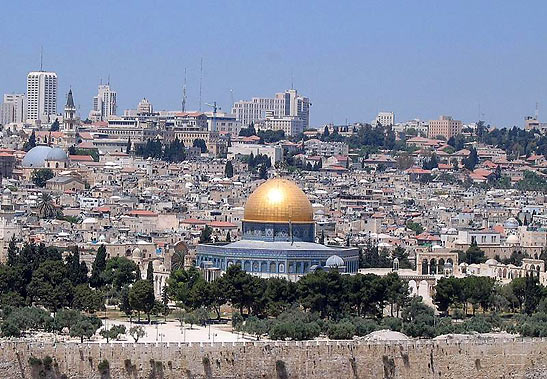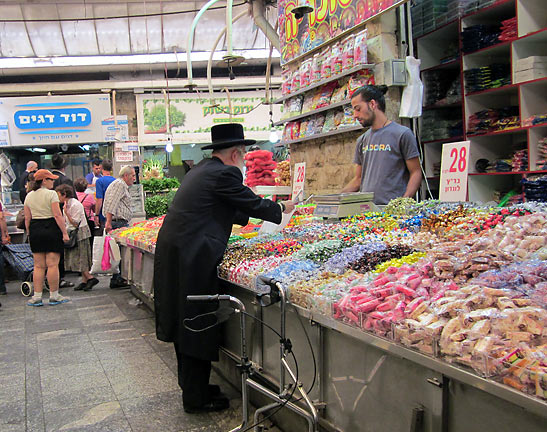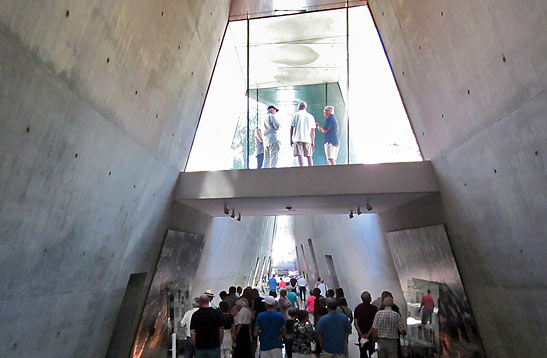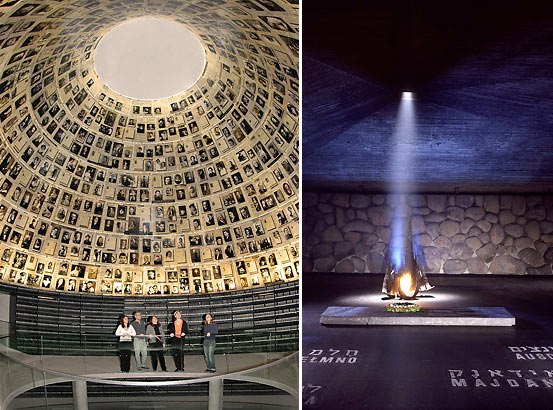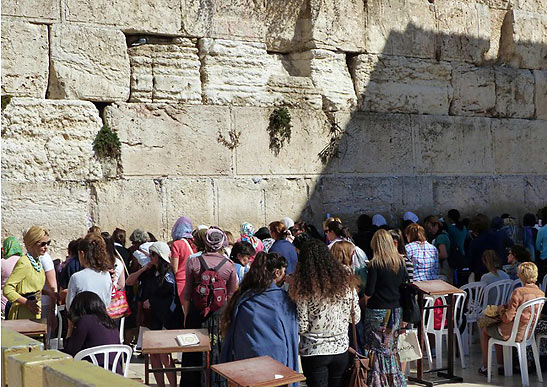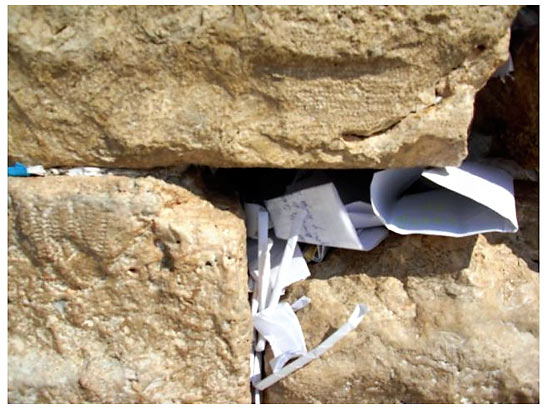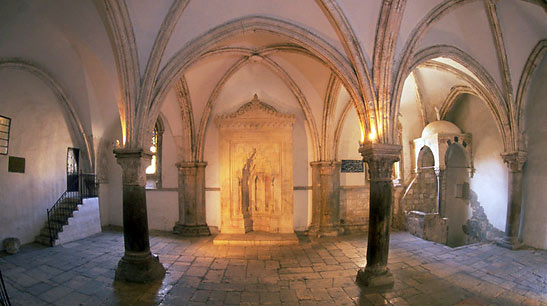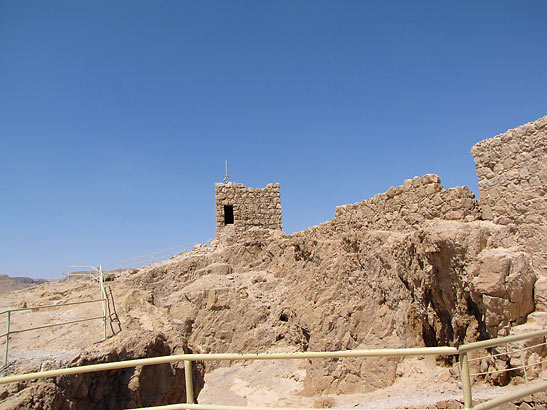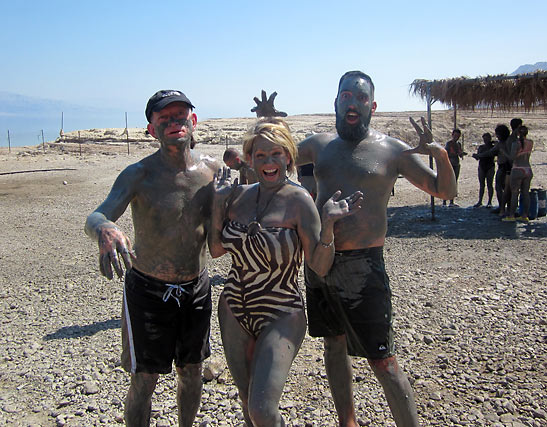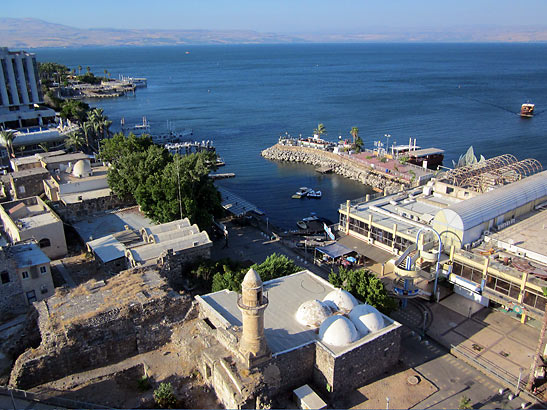 |
 |
|
 |

|
Israel – A Magical
Journey
Back in Time Part Two: Visiting Sacred Ancient Sites Beverly Cohn – Editor-at-Large Abroad
We began our day with a typical Israeli buffet breakfast, which consisted of a wide variety of cheeses, eggs, fish, including herring and sardines, as well as cereals, salads, hummus, tehina, baba ghanoush, strained yogurt called labaneh, a huge selection of vegetables, freshly baked breads and rolls, with delicious pastries to sweetly top off the meal. Fortified for the day's activities, we met our guide, Micahl Neumann, a veritable encyclopedia of history, who gave us a walking tour of Jerusalem, beginning with Mount Scopus where we saw a spectacular view of Jerusalem and the Judean Desert, as well as the ancient Dome of the Rock. Built in the late 7th Century CE, this historic site is situated in the center of Temple Mount where the Jewish Second Temple once stood. It is the oldest Islamic monument and is sacred to Jews and Christians as well. Another significant site, and city landmark, is the Tower of David. Located in the old city, it is the highest point of the southwestern hill of Jerusalem and for over twenty centuries protected the city.
There were boundless walking opportunities in Jerusalem, one of which was a stroll through the Mahane Yehuda fruit and vegetable market, one of a variety of markets scattered throughout the city. Filled with just about any fruit, vegetable, or treat that you could possibly want, this is a popular market where locals do their shopping. After dinner at the well-known Chakra restaurant, which is considered one of the nicest bistro restaurants in Jerusalem, there was a we made a quick visit to the Old Jerusalem Railway, which has been restored and turned into an entertainment complex. It was now definitely time to hit the sack for a good night's sleep at the Mount Zion Hotel, as tomorrow was to be packed with another exciting itinerary. DAY 2: Yad Vashem & The Wailing Wall It's amazing what a good tour guide can pack into one day and Day 2 was crammed with visits to yet more historic sites. After breakfast, we headed for Yad Vashem – the National Memorial and Museum of the Holocaust. This was probably one of the most fascinating, and at the same time, emotional experiences of the trip, as the entire museum is a living history of one of the blackest, most heinous events in the history of mankind. Sitting at the foot of Mount Herzl, Yad Vashem is a living memorial and a repository of documentation of the extermination of 6,000,000 Jews at the hands of the Nazis during World War II. It is the world's center for, research, education, and commemoration of the Holocaust.
One of the most moving sections of Yad Vashem is The Hall of Names, which lists the names of Jews who were murdered. When you see a name or a piece of clothing belonging to a child, or a pair of shoes, or eyeglasses, or a notebook, the reality of the Holocaust becomes stunningly real. The Eternal Flame illuminates the Hall and also shines a light on the stone crypt containing ashes of Holocaust victims whose remains were found in extermination camps. Plan to spend a lot of time at the museum, as there are interactive opportunities that you will not want to miss.
Continuing our tour, we headed over to the Judaism's most sacred site, the Western Wall or the Wailing Wall to which it is commonly referred. The divided sections include one for men and a smaller section for women and that separation is strictly enforced.
The tradition is to write your prayer or wish on a piece of paper and insert it into one of the cracks in the wall, most of which were crammed with little pieces of paper. Loud talking is frowned upon and the practice among the most religious Jews is to not turn their backs to the wall, but simply back away while still facing the wall. Next we were off to the Moslem Quarter, which included the Arab market where some of us bought beautiful religious artifacts. The vendors were very friendly and welcomed American Express, and Master or Visa cards.
There were countless "goose bump" moments, one of which was standing in the second-story room where Jesus had his Last Supper with his disciples. Also referred to as a Passover dinner, the dining room (The Cenacle) is located above the Tomb of David, near the Dormition Abbey on Mount Zion. The next day, Jesus was captured, tried, and sentenced by the Romans to being crucified, the prevailing capital punishment used at that time for a vast array of crimes. Like many of us, I have read about these historic sites over the years but actually being there is an almost indescribable thrilling visceral experience. It was a long, but most joyous day and our group was ready for a gourmet dinner at the famous Eucalyptus Restaurant, hosted by Paul Manor, of the Ministry of Tourism. Chef Moshe Basson is famous for his fabulous Mediterranean vegetable dishes, as well as his unique Biblical dishes, making ample use of herbs from his own garden. At one point, he asked all the diners to meet him in the courtyard where he performed a ritual over a large pot of makluba (rice and chicken) that involved making a circle seven times around the pot, reciting a prayer, with everyone making their own wish. Like all Israelis, except for the Orthodox, who are exempt from service, the chef was in the Army for three years, as was our host. A few people told me that a great majority of Israelis object to this exemption as it means someone else's son protects and fights for Israel, while their sons are in synagogue praying. Many hope, that in the interest of fairness, that such preferential treatment some day be eliminated. By the time we finished our dinner, and a most lively political discussion, it was close to 11:00 pm and time to say good night. DAY 3: Dead Sea & Jordan Valley Region Once again, fortified with a stick-to-your-ribs breakfast, we were off on an adventure through the Judean Desert on the way to the Dead Sea region, the lowest place in the world at 1,350 feet below sea level. The breathtaking scenery along the way changed from barren desert to lush greenery, a visual feast for photographers.
Ever since I was a child, I was told stories about Masada and the valiant Jews who fought off the Romans during the Great Jewish Revolt, which occurred around 73 CE. An isolated, almost an impenetrable fortress overlooking the Dead Sea, Masada is historically of great significance as it was the last Jewish stronghold against the Roman invasion and those determined Jews fought valiantly for three years. In the end, rather than surrender, the heroic rebels, as well as the families in hiding, committed mass suicide so they would not die as slaves. One of the top tourist destinations in Israel, Masada (Hebrew for fort) was originally built by Herod the Great between 37 and 31 BCE, and was originally used by the King of Judea as a refuge for himself. The compound included a protective thick wall, storehouses, cisterns used to catch rainwater, a barracks, palaces, and an armory, traces of which are still recognizable. We took a cable car to see first hand the excavations of the fortress. We walked up the steep, irregular winding path trying to imagine what it must have been like for the Jews defending their freedom to see Roman soldiers making their way to the top. The following excerpt from a passage by Elazar ben Yair, sums up what must have been the mindset that gave the rebellious Jews the strength to fight for so many years: "Since we long ago resolved never to be servants to the Romans, nor to any other than God himself…We were the very first that revolted, and we are the last to fight against them…it is still in our power to die bravely and in a state of freedom."
Following this intense experience, we were then off to the Dead Sea to enjoy the Mineral beach where we were given an opportunity to float in the Dead Sea. Three of the more courageous journalists went in for a dip, followed by a head-to- toe immersion in the mud. Because of the extremely high salt content of the water, we were warned to not go in if any of us had the slightest cut and if you did venture forth, to not rub your eyes as the salt would burn. I had to at least feel the water, so I put my hands in and having a little cut on one of my cuticles, did feel the burning that we were warned about. Nevertheless, it's quite awesome to see people floating atop the water without any effort.
Our next adventure was a drive along the Jordan Valley to Tiberias, a charming, historical resort town on the Sea of Galilee, where we checked into the 5-star Leonardo Plaza Hotel. We had some leisure time before dinner and while some of our group explored the beaches and quaint shops, I decided to relax at the pool and enjoy a delicious lunch served by a lovely young American woman who moved to Israel because she was so intrigued by its history and what she called "a safe way of life." It was Friday and that evening the hotel was packed with about 500 men, women, and children who gathered in the hotel's is huge restaurant to enjoy a family Shabbat dinner, which for observant Jews around the world is the main meal of the week. Little kids ran around the room laughing, babies cried, and the chatter was almost music to my ears, as I had never quite witnessed anything quite like that. Respecting the Orthodox tradition of not engaging in certain activities from sundown Friday to sundown on Saturday, there was one elevator set aside as the "Shabbos" elevator, with the buttons were pre-pressed for each floor. Note: Originally we thought my trip to Israel could be covered in a two-part feature, but with so much material to work with, we've decided to divide it into three parts. So, stay tuned for the final installment, which will take you to the Mount of Beatitudes, the site of Jesus' Sermon on the Mount, Capernaum, the ancient Jewish fishing village where Jesus began his ministry, as well as other fascinating historic and modern sites. Related articles: |
This site is designed and maintained by WYNK Marketing. Send all technical issues to: support@wynkmarketing.com

|






